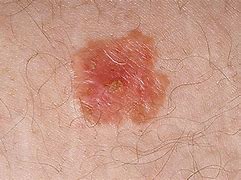Skin cancer is one of the most common types of cancer, with millions of cases diagnosed worldwide each year. Recognizing the early symptoms of skin cancer is crucial for timely intervention and improved treatment outcomes. In this article, we will explore the symptoms of skin cancer, discuss the importance of early detection, and provide guidance on monitoring your skin and seeking medical attention when necessary.
Understanding Skin Cancer
Skin cancer develops when the skin cells undergo abnormal growth, typically triggered by damage from ultraviolet (UV) radiation exposure, such as sunlight or tanning beds. There are several types of skin cancer, including basal cell carcinoma (BCC), squamous cell carcinoma (SCC), and melanoma, with each exhibiting distinct symptoms and characteristics.
Common Symptoms of Skin Cancer
- Change in Skin Moles or Lesions: One of the most common signs of skin cancer is a change in the appearance of existing moles or the development of new growths on the skin. Look for moles or lesions that exhibit irregular borders, uneven coloring, changes in size or shape, or a raised and rough texture.
- Unusual Growth or Bump: Pay attention to any abnormal growths or bumps on the skin that may appear shiny, pearly, translucent, or waxy in texture. These growths may increase in size over time and may bleed or develop a crust.
- Persistent Sores or Ulcers: Non-healing sores or ulcers on the skin that do not improve or show signs of improvement within a few weeks should be evaluated. These sores may bleed, ooze, or form a scab repeatedly.
- Reddened or Swollen Skin: Skin areas that become persistently reddened, inflamed, or swollen, without an obvious cause, may be indicative of skin cancer. Pay attention to any changes in skin texture or persistent itching or tenderness.
- Itching or Sensation Changes: Skin cancer may cause persistent itching or a tingling sensation in the affected area. If you notice these symptoms without any apparent cause or relief, it is advisable to seek medical attention.
- Spread of Pigment: In cases of melanoma, the most aggressive type of skin cancer, there may be an irregular spread of pigment beyond the borders of a mole or lesion. This phenomenon is known as the “ABCDE rule”: asymmetry, border irregularity, color variation, diameter larger than 6 millimeters, and evolving shape or size.
When to Seek Medical Attention
If you notice any persistent or concerning changes in your skin, it is important to consult a dermatologist or healthcare professional. While these symptoms can be indicative of skin cancer, they can also be caused by benign conditions. Early detection is key to successful treatment, so do not hesitate to seek medical evaluation if you have any concerns.
Conclusion
Being aware of the symptoms of skin cancer and regularly monitoring your skin can significantly contribute to early detection and improved treatment outcomes. While many skin conditions are benign, it is crucial to pay attention to any changes in moles, growths, or the overall appearance of your skin. If you notice persistent or concerning symptoms, consult a healthcare professional promptly. Additionally, practicing sun safety measures, such as using sunscreen, wearing protective clothing, and avoiding excessive sun exposure, can help reduce the risk of developing skin cancer.

